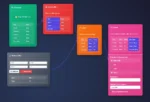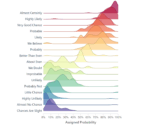Whether it’s for technical architects refining enterprise data platforms or senior executives focused on “seeing clearly” through sprawling data estates, selecting the right visualization grammar specification language can make or break the accessibility, usefulness, and expandability of your data visualization strategy. You might be visualizing key analytics from your predictive analytics models for enhanced supply chain management, monitoring anomaly detection results from entropy-based data quality monitoring, or enriching data flows with dynamic transformations and visualizations through robust Procore API consulting expertise. Having an advanced, efficient framework for data visualization grammar is the key to unlocking intuitive insights, swifter decision-making, and optimized innovation across your organization.
Understanding Visualization Grammar Specification Languages
A visualization grammar specification is a systematically defined syntax designed to formally define data visualizations. Instead of building visualizations through point-and-click user interfaces, visualization grammars provide structured rules for mapping data attributes to visual elements. Developers and analysts apply these languages to clearly define visualizations syntaxically, automating and replicating visualizations with precision, repeatability, and flexibility.
The primary value of choosing the right visualization grammar specification lies in the powerful abstraction it offers. These languages separate visualization specification from implementation, leading to improved maintainability, consistent visual notation, and clearer documentation, ultimately fostering smoother collaboration between engineers, analysts, and stakeholders. Furthermore, visualization grammars work seamlessly within modern data workflows, complementing strategies such as machine learning pipeline designs for production, and supporting robust, real-time visual reporting needs simultaneously.
Popular visualization grammar specification languages include Vega, Vega-Lite, D3.js, and ggplot2 (specific for R users). Each of these tools leverages slightly different approaches, with varying degrees of complexity, usability, and adaptability. Selecting the ideal visualization grammar specification language requires careful consideration of your organization’s specific requirements, existing technology stack, technical literacy among data teams, and long-term scalability goals. Let’s break down and closely compare these popular options to help you confidently pick the right fit for your organization’s data visualization strategy.
Vega and Vega-Lite: Declarative, Adaptable, and Versatile
Explaining the Difference and Relationship Between Vega and Vega-Lite
Vega and Vega-Lite are powerful open-source visualization grammar tools built by the UW Interactive Data Lab. Vega is the foundational visualization grammar, offering immense flexibility and configurability, though it has a steeper learning curve. Vega defines visualizations through richer APIs and lower-level primitives, empowering visualization designers to orchestrate highly customized graphical compositions at granular detail.
Vega-Lite, in contrast, provides a higher-level grammar abstraction aimed at simplifying visualization creation while retaining powerful expressivity. Vega-Lite enables rapid prototyping and concise descriptive visualization specifications with far less boilerplate, automatically applying useful defaults that speed up development and ease adoption. Additionally, Vega-Lite automatically compiles specs into lower-level Vega code, allowing developers the flexibility to smoothly transition from streamlined approaches in Vega-Lite towards more complex, custom visualizations using Vega.
Thanks to their compatibility, both Vega and Vega-Lite seamlessly fit within enterprise software ecosystems. Integrated visualization capabilities help organizations enforce advanced security configurations like row-level security in data transformation flows, enabling powerful real-time reporting embedded directly in modern data stacks. Enterprises or startups focused on rapidly evolving data capabilities that require adaptability and flexibility for future complexity should strongly consider the Vega family.
D3.js: Powerful and Flexible, Ideal for Customization
An Overview Of JavaScript-Based Grammar Powerhouse
D3.js (Data-Driven Documents) stands among the most popular visualization grammars globally, powering highly interactive visualizations across industries. Unlike purely declarative visualization languages, D3 combines visualization grammar principles with flexibility and interaction through JavaScript. The library revolves around the manipulation of DOM elements based on data bindings, letting users script granular visual concepts and build uniquely compelling visual displays.
This capability extends especially well to complex visualization scenarios demanding sophistication and a high degree of customization. If your visualization requirements involve intricate interactivity, multifaceted hierarchies, and customized animation or dynamic event handling, D3.js easily emerges as a top choice.
However, this versatility and flexibility introduce complexity that may require additional resources or expert guidance to ensure scalable, maintainable solution architectures. It aligns well with organizations emphasizing sophisticated frontend interfaces or robust telemetry aggregation solutions for real-time insights, where amplified user engagement and custom interactive features significantly enhance user experience and analytics comprehension.
ggplot2: Streamlined Visualization Grammar for the R Ecosystem
R-Based Visualization Excellence with a Strong Analytical Tradition
ggplot2 pioneered adherence to Wilkinson’s Grammar of Graphics principle, introducing one of the earliest systematic approaches to visualization grammar in data science. Created by Hadley Wickham within the R programming ecosystem, ggplot2 empowers data scientists and analysts to quickly transform large datasets into professional and insightful visualizations using intuitive and straightforward syntax.
This powerful visualization grammar combines aesthetic flexibility with high readability and maintainability. It particularly excels in environments driven by exploratory data analysis, statistical modeling workflows, and quick prototyping, effectively bridging technical concepts with intuitive visualization design. Analysts empowered with ggplot2 often showcase how visualizations enhance decision support narratives, effectively translating deeply analytical perspectives into accessible stakeholder communication.
While ggplot2 is powerful within its context, it doesn’t directly cater to interactive visualizations by design. Instead, it excels primarily in static visual storytelling often used in conjunction with interactive frameworks like R Shiny for interactive dashboards. Organizations with established R-centric analytics workflows, often involved in advanced analytics and machine learning scenarios, will find ggplot2 an invaluable companion tool that directly supports an organization’s interactive visualization ambitions when paired with additional interactive packages.
Choosing Between Vega Family, D3.js, and ggplot2: Key Considerations
Identifying Complexity, Customization, and Workflow Fit
Selecting among these leading visualization grammar languages involves careful evaluation of your organization’s unique functionality needs, technical maturity, compatibility with existing systems, and future scalability expectations. For instance, enterprises heavily invested in JavaScript frontend technology and complicated user interaction workflows might choose D3.js over others to ensure maximum versatility and complementation to existing software engineering assets. If your team primarily uses R, appreciates analytical rigor, and creates predominantly static or lightly interactive visualizations, ggplot2 paired with Shiny might best suit your workflows.
Meanwhile, Vega and Vega-Lite sit comfortably in the middle ground, offering declarative ease, developer-friendly flexibility, and powerful use-cases — ideal for organizations that foresee evolving their interactive analytics stack extensively in the future. Vega particularly complements sophisticated data engineering strategies and easily integrates with innovative data pipelines that employ advanced concepts discussed in articles like why most data engineers don’t architect for scale and Python over Tableau Prep in data pipelines. Understanding your current capabilities and plotting how visualization grammars integrate into your evolving technical landscape ensures insightful visualizations both now and moving forward.
Final Thoughts: Choosing the Right Visual Grammar Brings Visualization Strategy to Life
The optimal visualization grammar specification language ultimately depends upon careful thought and strategic decision-making around complexity, flexibility, ease of use, scalability, and compatibility within existing technology stacks. Organizations seeking competitive advantage through clarity, actionable insights, minimized friction with analytical innovation, and high-quality reliable visualizations must embrace these powerful specification languages appropriately. Leveraging advanced, robust visualization grammars promotes scalable, insightful visual analytics that empower strategic decision-making across technical and executive stakeholder seams—establishing a truly informed, data-driven culture.
Thank you for your support, follow DEV3LOPCOM, LLC on LinkedIn and YouTube.

























